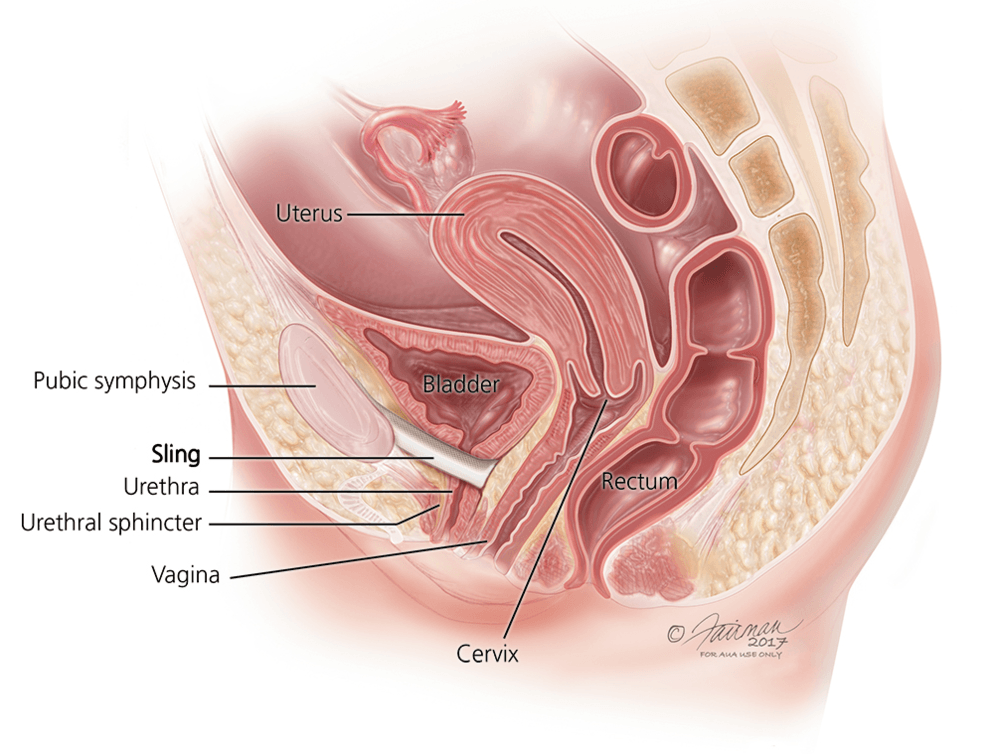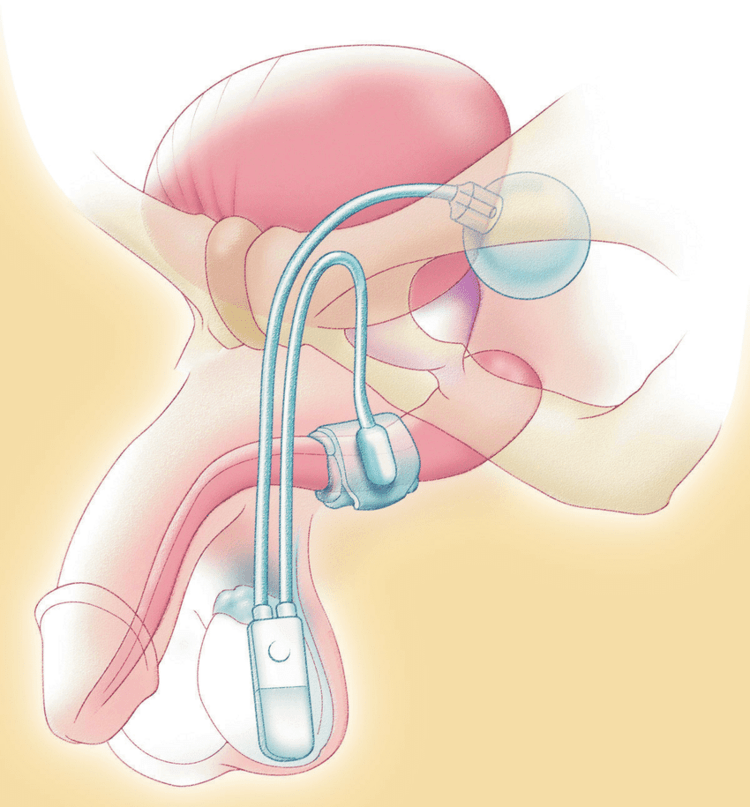Advanced Treatments for Urinary Incontinence
SURGERY TO CONTROL STRESS URINARY INCONTINENCE
Making the decision to have surgery can be very personal. It is made in consultation with your surgeon based on the characteristics of your incontinence, your goals and your preferences.
It helps to learn as much as you can before you decide to move forward with surgery. Explain your goals to your healthcare provider. Find out which type of surgery is recommended and how much it may reduce urine leaks to see if it's worth doing. Learn what to expect during and after surgery. Also ask about risks and possible complications.
Here are a few sample questions for your healthcare provider to help you make the best decision:
- Which surgery is best for me? Why?
- What are the risks with surgery?
- Will surgery fix my SUI completely?
- How long is the recovery?
- Will I still have incontinence or other symptoms after surgery?
- Will my insurance pay for surgery?
- Should I do this now, or wait?
Waiting to have SUI surgery won't harm you. Unlike some other medical conditions, delaying SUI surgery doesn't usually change the outcome.
Surgery for SUI in women is usually very successful. While each of the most commonly performed surgeries are similar in terms of success rates, they have different risks. It is important to understand your options so you can feel confident about the decision you make. If you want to find out more about SUI surgery, ask your healthcare provider what kind may work best for you, why and for how long.
Below are different surgical procedures specific to men and women for SUI.

Sling Surgery for Women with SUI
The most common surgery for SUI in women is "sling" surgery. In this surgery, a small strip of material (a sling) is placed under your urethra to prevent it from moving downward during activities. It acts as a hammock to support the urethra. Many sling techniques and materials have been developed. Slings can be made from your own tissue, donor tissue or surgical mesh.
For any type of sling surgery, there are different risks that should be discussed with your surgeon before starting.
-
Read more
These are the primary sling surgeries used to treat SUI:
- Midurethral sling-The midurethral sling is the most common type of surgery used to correct SUI. The sling is made out of a narrow strip of synthetic mesh that is placed under the urethra with a variety of techniques: retropubic, transobturator and single-incision. Your doctor will recommend which anchoring location is right for you and review risks.
- For sling surgery made from surgical mesh, the surgeon may only need to make a small cut (incision) in the vagina. The sling is then inserted under the urethra and anchored in the surrounding pelvic floor tissue. This surgery is short and recovery may be shorter than with an autologous sling. There are additional risks associated with using mesh that you should discuss with your surgeon.
Artificial Urinary Sphincter (AUS)
The most effective treatment for male SUI is to implant an artificial urinary sphincter device. This device has three parts:
- A fluid-filled cuff (the artificial sphincter), surgically placed around your urethra.
- A fluid-filled, pressure-regulating balloon, inserted into your belly.
- A pump you control inserted into your scrotum.
The artificial urinary sphincter cuff is filled with fluid which keeps the urethra closed and prevents leaks. When you press on the pump, the fluid in the cuff is transferred to the balloon reservoir. This opens your urethra and you can urinate. Once urination is complete, the balloon reservoir automatically refills the urethral cuff in 1-3 minutes.
Artificial sphincter surgery can cure or greatly improve urinary control in more than 7 out of 10 men with SUI. Results may vary in men who have had radiation treatment. They also vary in men with other bladder conditions or who have scar tissue in the urethra.

Male Sling for SUI
Similar to female mid-urethral slings, the male sling is a narrow strap made of synthetic mesh that is placed under the urethra. It acts as a hammock to lift and support the urethra and sphincter muscles. Most commonly, slings for men are made of surgical mesh. The surgical incision to place the sling is between the scrotum and rectum.
The male sling is most often used in men with mild to moderate SUI. It is less effective in men who have had radiation therapy to the prostate or urethra, or men with severe incontinence.
AFTER TREATMENT
The goal of any treatment for incontinence is to improve your quality of life. Surgical treatments usually work, especially when combined with lifestyle changes. Make sure you rest for a few weeks to allow for recovery and healing.
Common sense and care will help the benefits of these surgeries last for a long time. Continue with daily Kegel exercises to maintain pelvic muscle strength. Ideally, you should maintain a healthy weight. A large amount of weight gain or activities that strain your belly and pelvis can harm surgical repair over time.
Stay in touch with your healthcare provider/surgeon about follow-up care. Typically, you will be asked to visit your surgeon between six weeks and six months after surgery for a follow-up visit. Your bladder may also be tested to see how well its releasing urine and if urine remains in the bladder after going to the bathroom. If leaking symptoms remain or if you have any pain, let your surgeon know right away.
In most cases, great improvements and even the cure of all leaks are possible for people who choose SUI surgery Keep in mind that the medical devices implanted with surgery may need adjustments over time.
All Rights Reserved | Site by Fix8

